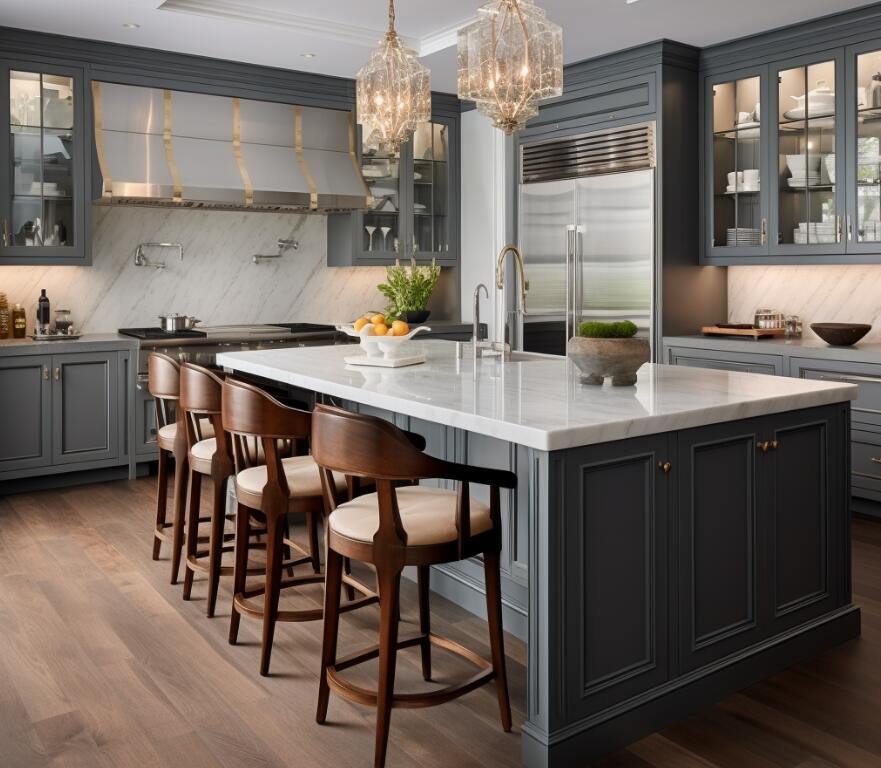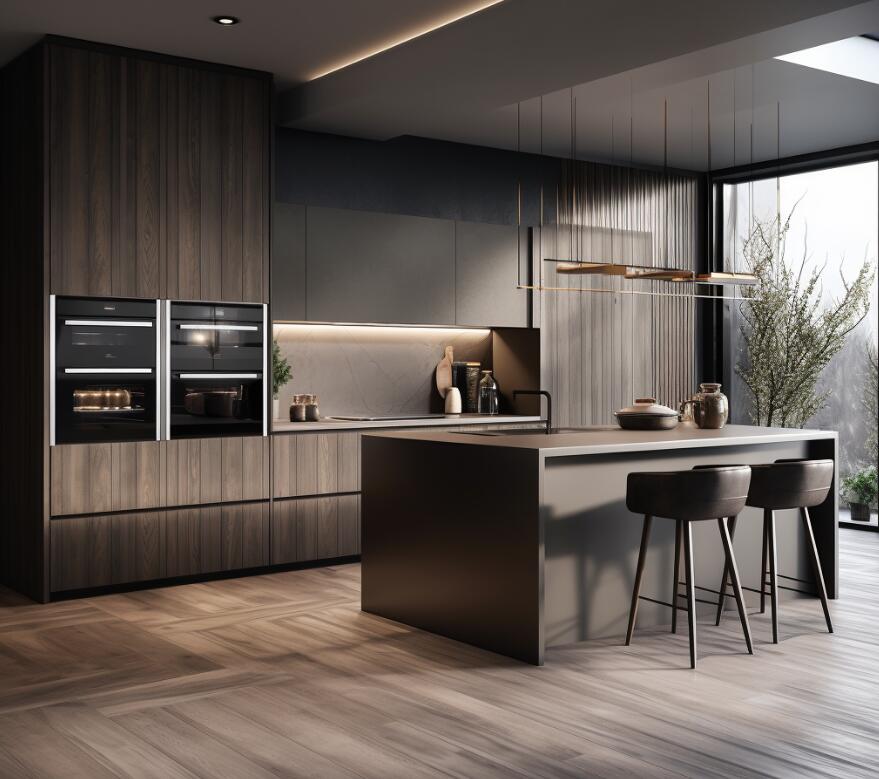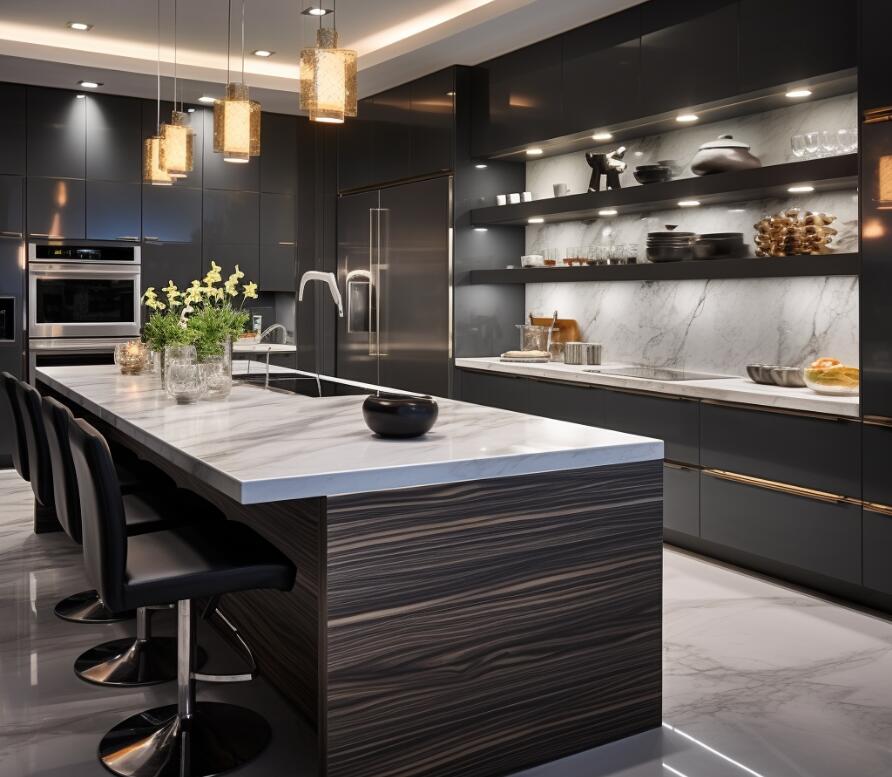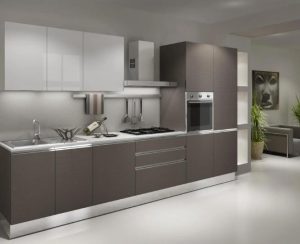Introduction
The global demand for kitchen cabinets has seen a significant surge in recent years, with homeowners and interior designers constantly on the lookout for high-quality, stylish, and affordable options. Among the myriad of choices available in the market, Chinese kitchen cabinets have emerged as a popular choice for many. But why is this the case?
China, known for its rich history of craftsmanship and manufacturing prowess, has become a dominant player in the global furniture market. The country’s ability to produce top-notch kitchen cabinets that combine aesthetics, functionality, and affordability has made it a go-to destination for importers worldwide. Whether you’re a homeowner looking to renovate your kitchen or a business seeking to tap into the lucrative kitchen cabinet market, importing from China offers a plethora of advantages.
In this comprehensive guide, we’ll delve deep into the world of Chinese kitchen cabinets, exploring the benefits of importing them, understanding the market dynamics, and providing a step-by-step guide to ensure a smooth importing process. Whether you’re a seasoned importer or just starting out, this guide aims to equip you with the knowledge and insights needed to make informed decisions and maximize your investment.

Why Import Kitchen Cabinets from China?
1. Cost-Effective Solutions:
One of the primary reasons businesses and individuals turn to China for kitchen cabinets is the cost advantage. Chinese manufacturers have access to abundant resources, efficient production methods, and economies of scale, allowing them to offer competitive prices without compromising on quality.
2. High-Quality Craftsmanship:
Chinese artisans have a long-standing tradition of meticulous craftsmanship. Modern Chinese factories combine this traditional expertise with advanced machinery, ensuring that the cabinets are not only beautifully designed but also durable and long-lasting.
3. Wide Range of Styles and Designs:

Whether you’re looking for contemporary designs, classic woodwork, or custom-made solutions, Chinese suppliers offer a vast array of options. Their ability to adapt to global design trends ensures that you’ll find something that fits your specific aesthetic and functional requirements.
4. Customization Capabilities:
Many Chinese manufacturers offer bespoke solutions, allowing you to tailor your kitchen cabinets to specific sizes, materials, colors, and finishes. This level of customization ensures that you get a product that aligns perfectly with your vision.
5. Streamlined Production and Lead Times:
With advanced production facilities and efficient logistics networks, Chinese suppliers can handle bulk orders and ensure timely delivery. Their streamlined operations mean shorter lead times, ensuring that your project stays on schedule.
6. Comprehensive One-Stop Solutions:
Apart from just the cabinets, many suppliers offer complete kitchen solutions, including countertops, sinks, handles, and other accessories. This holistic approach simplifies the procurement process and ensures design consistency.
7. Growing Emphasis on Sustainability:
In response to global demands, many Chinese manufacturers are adopting sustainable practices, using eco-friendly materials and production methods. This shift not only benefits the environment but also caters to consumers who prioritize sustainability.
8. Easy Communication and Transparency:
With the globalization of trade, many Chinese suppliers have multilingual sales and support teams, making communication seamless. They often provide detailed product catalogs, samples, and transparent pricing, ensuring that you’re well-informed at every step of the process.
In conclusion, importing kitchen cabinets from China offers a blend of quality, variety, and affordability. By understanding the benefits and potential of the Chinese market, you can make strategic decisions that enhance the value and appeal of your kitchen space.
Understanding the Chinese Kitchen Cabinet Market
1. Market Overview:
The Chinese kitchen cabinet market has witnessed significant growth over the past few decades. As one of the world’s largest manufacturing hubs, China has established itself as a major player in the global furniture industry, with kitchen cabinets being a notable segment.
2. Key Players and Regions:
China’s kitchen cabinet industry is concentrated in specific regions known for their manufacturing prowess. Cities like Foshan, Guangzhou, and Shenzhen are renowned for their furniture clusters. Leading manufacturers, such as OPPEIN, ZBOM, and GoldenHome, dominate the market with their extensive product ranges and export capabilities.
3. Material Trends:
Chinese manufacturers utilize a variety of materials in cabinet production, including solid wood, MDF (Medium Density Fiberboard), plywood, and particleboard. The choice of material often depends on the desired finish, durability, and price point.
4. Design Evolution:

Chinese designs have evolved to cater to international tastes. While traditional Chinese designs emphasized intricate woodwork and carvings, contemporary designs focus on sleek lines, minimalist aesthetics, and functional features like soft-close drawers and modular systems.
5. Technological Advancements:
The integration of technology into kitchen cabinets is a growing trend. Features like built-in LED lighting, touch-sensitive drawers, and smart storage solutions are becoming increasingly popular, enhancing functionality and user experience.
6. Regulatory Landscape:
China has implemented stringent quality and safety standards for furniture exports. Understanding these regulations, such as the China Compulsory Certification (CCC) and quality inspection protocols, is crucial for importers to ensure compliance and smooth customs clearance.
7. Trade Shows and Expositions:
Events like the China International Furniture Fair (CIFF) and the Shanghai Kitchen & Bath Show provide valuable insights into the latest trends, designs, and innovations in the kitchen cabinet industry. These platforms also offer opportunities for direct interactions with suppliers, designers, and industry experts.
8. Challenges and Opportunities:
While the Chinese kitchen cabinet market offers numerous advantages, importers should be aware of potential challenges, such as cultural differences, communication barriers, and varying business etiquettes. However, with proper research and due diligence, these challenges can be transformed into opportunities for fruitful collaborations and long-term partnerships.
In summary, understanding the nuances of the Chinese kitchen cabinet market is essential for successful importing. By staying informed about market dynamics, key players, and emerging trends, importers can make informed decisions and capitalize on the vast opportunities the Chinese market presents.
Selecting the Right Kitchen Cabinets
1. Define Your Needs:
Before diving into the vast selection of kitchen cabinets available, it’s crucial to define your specific needs. Consider factors like the size of your kitchen, storage requirements, and the overall aesthetic you’re aiming for.
2. Material Matters:
The material of the cabinet plays a significant role in its durability, appearance, and cost. Common materials include:
- Solid Wood: Offers a classic look and is durable but can be more expensive.
- Plywood: A sturdy option that resists warping better than solid wood.
- MDF (Medium Density Fiberboard): An affordable choice that’s smooth and consistent but less durable than solid wood or plywood.
- Particleboard: Cost-effective but less durable and can be susceptible to moisture.
3. Style and Design:
Chinese manufacturers offer a plethora of design options, from traditional to contemporary. Decide whether you want a shaker, flat-panel, inset, beadboard, or other styles. Also, consider features like glass fronts, open shelving, or decorative moldings.
4. Finish and Color:
The finish can dramatically change the cabinet’s look. Options range from natural wood finishes to painted, glazed, distressed, or even thermofoil finishes. Choose a color that complements your kitchen’s overall design, whether it’s a classic white, a rustic brown, or a bold contemporary hue.
5. Hardware Choices:
The knobs and pulls you choose can make a significant difference in the cabinet’s appearance. From modern sleek handles to vintage-style knobs, the hardware should align with the cabinet’s style and the kitchen’s overall theme.
6. Functional Features:
Modern kitchen cabinets come with a range of functional features:
- Soft-close hinges: Prevent doors from slamming shut.
- Pull-out shelves: Offer easy access to items at the back.
- Lazy Susans: Maximize corner space.
- Built-in dividers: Organize cutlery and utensils efficiently.
7. Customization Options:
One of the advantages of importing from China is the ability to customize cabinets to your specifications. Whether it’s adjusting sizes, adding specific features, or choosing unique materials, many manufacturers offer customization options to meet your exact needs.
8. Quality Assurance:
Ensure that the cabinets meet quality standards. Look for certifications, ask about the manufacturer’s quality control processes, and consider ordering samples before making a bulk purchase.
9. Budget Considerations:
While Chinese kitchen cabinets offer competitive prices, it’s essential to set a budget. Remember to factor in additional costs like shipping, taxes, and potential import duties.
In conclusion, selecting the right kitchen cabinets requires a balance of aesthetics, functionality, and budget. By considering the factors mentioned above and collaborating closely with the manufacturer, you can ensure that you choose cabinets that enhance your kitchen’s beauty and functionality.
The Ordering Process
1. Research and Shortlist Suppliers:
Start by researching various suppliers and manufacturers. Look for those with good reviews, a solid reputation, and a history of exporting to your country. Shortlist a few based on your requirements.
2. Initial Communication:
Reach out to the shortlisted suppliers. Discuss your requirements, ask questions, and gauge their responsiveness and professionalism. This step will give you an idea of their customer service quality.
3. Request for Quotations (RFQ):
Once you’ve detailed your requirements, ask for quotations. Ensure the quote includes all costs, from the product price to any additional charges like customization or special packaging.
4. Sample Order:
Before placing a bulk order, it’s advisable to order samples. This allows you to assess the product quality, finish, and other specifics. Some suppliers might charge for samples, while others might offer them for free, excluding shipping costs.
5. Finalize the Order:
After reviewing the samples and ensuring they meet your standards, proceed to finalize the order. Discuss any last-minute changes, confirm quantities, and agree on the final price.
6. Payment Terms:
Typically, suppliers require a percentage of the total amount as a deposit (often 30% to 50%). The remaining amount is usually paid upon shipment or after receiving the bill of lading. Ensure you’re comfortable with the payment terms and consider using secure payment methods or platforms.
7. Production:
Once the deposit is made, the supplier will start the production process. Depending on the order size and customization, this can take anywhere from a few weeks to a couple of months.
8. Quality Inspection:
It’s crucial to have a quality inspection before the products are shipped. You can either visit the manufacturer yourself, hire a third-party inspection service, or ask the supplier to send detailed photos and videos of the finished products.
9. Shipment and Delivery:
Discuss shipping options with the supplier. Depending on the order size, you can choose between air freight (faster but more expensive) or sea freight (more cost-effective for bulk orders). Ensure all shipping documents are in order, and track the shipment until it reaches your destination.
10. After-sales Service:
Once you receive the order, check for any damages or discrepancies. If there are issues, communicate with the supplier immediately. A reputable supplier will offer after-sales service, ensuring any problems are promptly addressed.
In conclusion, the ordering process requires careful planning, clear communication, and due diligence. By following these steps and maintaining a good relationship with your supplier, you can ensure a smooth and successful import of kitchen cabinets from China.
Work with Ucherrful

Ucherrful Furniture, with its two decades of experience, stands as a global leader in the office furniture industry. Not only do they specialize in office chairs, but they also offer a wide range of high-quality office furniture products. Here’s why partnering with Ucherrful Furniture can be beneficial for your kitchen cabinet import business:
- Experience and Expertise: Ucherrful Furniture has been in the industry for over 20 years, making them a trusted manufacturer and distributor. They have a dedicated team of 150 technical workers, ensuring that the products are of top-notch quality.
- One-Stop Solution: Whether you are a wholesaler, brand owner, importer, or formwork provider, Ucherrful Furniture offers solutions tailored to your needs. Their services range from providing CAD drawings based on customer dimensions to offering suggestions on selection, color, scale, and space layout.
- High-Value Production: Ucherrful Furniture believes in offering the latest technology, high-end fabrics, and trendy accessories at an affordable price. They ensure that all their products follow strict ergonomic standards, guaranteeing maximum comfort.
- Massive Stock Availability: With a warehouse area of 12,000 square meters, Ucherrful Furniture can hold up to 20,000 finished chairs at any given time. This ensures timely deliveries and a continuous production process.
- Custom Design: Ucherrful Furniture’s team of designers works closely with clients to provide designs that fit their vision. They offer CAD drawings free of charge and provide suggestions based on the dimensions provided by the clients.
- Rapid Delivery: Ucherrful Furniture prides itself on its fast delivery times. With a strong supply chain and a well-stocked warehouse, they can deliver samples within a day and complete orders within seven days.
- Quality Control: Ucherrful Furniture products undergo 19 individual tests to meet the BIFMA standard. They adhere to both domestic and foreign production standards, ensuring the products are strong, durable, and reliable.
- Global Presence: Ucherrful Furniture has successfully delivered products worldwide, making them a preferred choice for B2B clients globally.
By partnering with Ucherrful Furniture, businesses can ensure they are working with a trusted, experienced, and efficient supplier that understands the intricacies of the furniture industry.
Note: If you’re considering importing kitchen cabinets from China, working with a trusted supplier like Ucherrful Furniture can streamline the process and ensure you receive high-quality products. Their expertise in the furniture industry, combined with their commitment to quality and customer satisfaction, makes them an ideal partner for businesses looking to import kitchen cabinets.
Potential Challenges and Solutions
When importing kitchen cabinets from China, businesses may encounter several challenges. However, with proper planning and understanding, these challenges can be mitigated. Here’s a breakdown of potential challenges and their solutions:
- Quality Concerns:
- Challenge: One of the primary concerns when importing products from another country is the quality of the products.
- Solution: Always request samples before placing a bulk order. Conduct regular quality checks and work closely with the supplier to ensure they understand your quality standards.
- Communication Barriers:
- Challenge: Language and cultural differences can lead to misunderstandings.
- Solution: Consider hiring a local interpreter or work with suppliers who have English-speaking representatives. Clear written communication and using diagrams or pictures can also help in conveying requirements.
- Logistical Delays:
- Challenge: Shipping delays, customs clearance, and other logistical issues can affect the delivery timeline.
- Solution: Work with reliable shipping agents and freight forwarders. Stay informed about any potential shipping disruptions and have a backup plan in place.
- Customs and Duties:
- Challenge: Navigating through customs regulations and understanding the duties can be complex.
- Solution: Familiarize yourself with the import regulations of your country. Work with a customs broker to ensure all paperwork is in order and duties are paid promptly.
- Hidden Costs:
- Challenge: There might be additional costs that were not initially considered, such as inspection fees, warehousing, or currency conversion fees.
- Solution: Always ask suppliers for a detailed quotation, including all potential fees. Budget for unexpected costs and regularly review expenses.
- Intellectual Property Rights:
- Challenge: There’s a risk of unintentionally infringing on someone else’s design or patent.
- Solution: Do thorough research to ensure the designs you’re importing are not patented in your country. If you’re creating custom designs, consider getting them patented.
- Cultural Differences in Business Etiquette:
- Challenge: Differences in business culture can lead to misunderstandings or perceived disrespect.
- Solution: Familiarize yourself with Chinese business etiquette. Simple gestures like understanding the importance of face-to-face meetings, gift-giving, and hierarchy can go a long way in building a strong business relationship.
- Changes in Exchange Rates:
- Challenge: Fluctuations in currency exchange rates can affect the cost of your order.
- Solution: Consider using forward contracts or other financial instruments to lock in exchange rates and protect against unexpected fluctuations.
By being aware of these challenges and proactively seeking solutions, businesses can ensure a smooth and successful importing process.
Conclusion
Importing kitchen cabinets from China offers a plethora of advantages, from cost savings to access to a vast array of designs and styles. As the global market continues to evolve, China remains a dominant player in the kitchen cabinet industry, providing businesses with opportunities to enhance their product offerings and cater to diverse customer needs.
However, like any international business venture, importing comes with its set of challenges. From understanding the nuances of the Chinese market to navigating logistical hurdles, businesses must be well-prepared to tackle these challenges head-on. By building strong relationships with suppliers, leveraging the expertise of sourcing agents like Ucherrful.com, and staying informed about market trends and regulations, businesses can position themselves for success.
In conclusion, while the journey of importing kitchen cabinets from China may seem daunting, the rewards in terms of quality, variety, and profitability are well worth the effort. With the right approach, businesses can tap into the vast potential of the Chinese market, ensuring long-term growth and success in the competitive world of kitchen furnishings.




